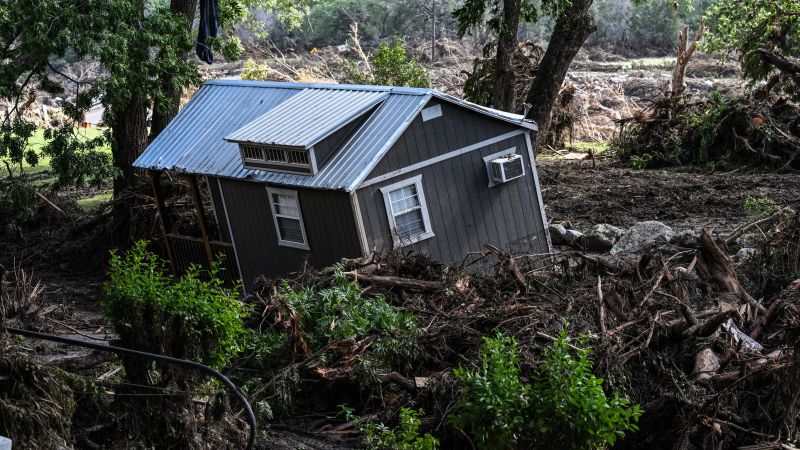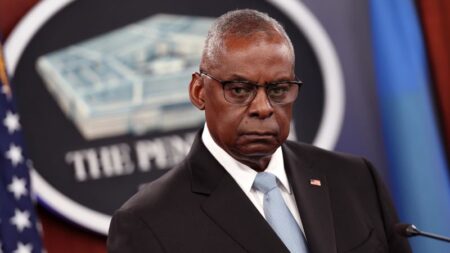President Donald Trump’s upcoming visit to central Texas on Friday is poised to address the catastrophic flooding that resulted in the tragic loss of over 100 lives. This natural disaster has provoked significant criticism aimed at the Trump administration’s emergency response efforts, forcing them to adopt a more defensive stance. The severity of the flooding, which inundated entire neighborhoods within minutes, has generated intense scrutiny regarding the effectiveness of governmental warning systems and rescue operations. Many are questioning the bureaucratic challenges faced by the Federal Emergency Management Agency (FEMA), hindering their immediate response capabilities during the crucial early phases of the disaster.
During his visit, Trump is expected to highlight the commendable progress made by search-and-rescue teams, aiming to show solidarity with victims and mitigate the ongoing criticism of his administration’s actions. A source close to the White House emphasized the president’s desire to express his concern for the affected citizens, asserting that “President Trump does not want to see things like this happen on his watch” and noting his penchant for positioning himself as a problem solver.
Accompanying Trump on this trip will be First Lady Melania Trump, with plans to meet first responders and receive briefings from local elected officials. He intends to spend time with families impacted by the flooding, a move designed not to disrupt ongoing rescue and recovery efforts. Among those expected to join Trump are Homeland Security Secretary Kristi Noem, Texas Governor Greg Abbott, Senator Ted Cruz, and Senator John Cornyn, who recently faced personal turmoil as his wife filed for divorce amid the campaign landscape.
This visit represents another stride by the White House to demonstrate support for Texas’s recovery efforts, all while internal discussions regarding FEMA’s future continue to percolate. Trump’s administration has expressed interest in downsizing the federal government’s emergency preparedness operations, which starkly contrasts with the ongoing situation in Texas. This divergence in sentiment can be seen compared to Trump’s earlier interactions with California’s Governor Gavin Newsom, where the president’s response was markedly more critical. Even after a visit to California, where he faced rebuke over his administration’s handling of wildfires, the debate surrounding disaster aid for California remains unresolved.
A Republican operative suggested that Trump’s treatment of states could be influenced by their political alignment, implying a preferential approach to red states like Texas over blue states such as California. However, White House spokeswoman Abigail Jackson has refuted these claims, insisting that Trump’s disaster recovery efforts have been equitable across states, including both California and North Carolina. In her defense, she pointed to federal initiatives that expedited recovery in those areas.
In terms of political strategy, Trump’s criticism of Democratic opponents during times of crisis has been common. He had previously chastised President Joe Biden for perceived inadequacies in responding to the devastating wildfires in Hawaii and for the federal administration’s handling of Hurricane Helene in North Carolina. Recently, Trump suggested, albeit briefly, that Biden may bear some responsibility for exacerbating the flooding, a statement he retracted soon after. His administration has predominantly sidestepped assigning blame while maintaining that the disaster was largely unavoidable, praising Governor Abbott and local officials for their response efforts.
Trump’s remarks during a Cabinet meeting underscored the severity of the floods, describing them as an unprecedented event. The White House has firmly rebuffed accusations implying that its policies contributed to vulnerabilities against such disasters, with Democratic critics expressing concerns regarding the reduction in staffing at the National Weather Service which, they argue, impaired accurate forecasting.
The continuous clashes over FEMA’s role and efficacy amid this crisis are rampant. Some FEMA officials cited new restrictions imposed by the Trump administration that delayed the deployment of essential search-and-rescue teams, illustrating the complexities at play. Numerous House Democrats have echoed calls for congressional hearings to address these delays and scrutinize the administration’s plans to limit FEMA’s capabilities.
Despite the political intricacies, Noem has publicly advocated for a complete overhaul of how federal emergency management operates, suggesting a need for a more responsive agency. She believes that responsibilities for disaster management should be primarily handled at the state and local levels.
In balancing political interests with a compassionate response, Trump’s visit is indicative of his longstanding strategy of prioritizing those who have expressed support at the ballot box. This approach resonates well in deep-red states like Texas, amplifying the importance of his visit as a symbol of solidarity and support. Overall, Trump’s engagement with Texas provides a complex interplay between political maneuvering and genuine concern amid significant national tragedy.











